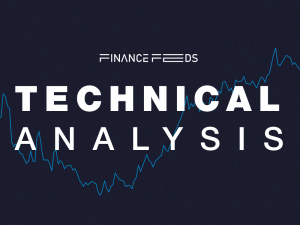Polkadot’s Second Parachain Auction Is Looming Large on the Horizon, Here’s Why It Matters
With the crypto market continuing to grab the attention of people across the globe, an increasing number of people are now beginning to view Polkadot as an integral piece of this fast-evolving space, especially since the project lays a high degree of importance on cross-chain interoperability, a concept that has garnered a lot of traction in recent times.

As a quick refresher, Polkadot can be thought of as a fully decentralized platform that is designed to allow diverse blockchains to transfer messages — which includes assets of monetary value — in a manner that is totally trust-free and secure. From a design standpoint, Polkadot has been made to be totally open source and even allows for additional blockchains to be built atop it (referred to as parachains).
As a result of employing such a unique operational structure, it is possible for users to execute atomic inter-chain transactions amongst themselves within the Polkadot ecosystem. All of this achieved in a way wherein there is no need for third-party intermediaries, thus allowing for the creation of a holistic internet of blockchains.
A closer look at how Polkadot’s parachain auctions work
One of the key selling points of the Polkadot system is that it makes use of an auction system to sell its parachain slots. In other words, all of the substrate-based independent blockchains that are connected to the core Polka ecosystem can be vied for by third-party firms for a fixed length of time (on a contractual basis).
To further elaborate on the matter, it should be pointed out that parachain auctions differ quite significantly from initial coin offerings (ICOs) that have traditionally been used by crypto projects to raise funds. This is because these auctions do not force investors to transfer ownership of their DOT to the bidding team or any other third party. Vying bids are returned to their rightful owners if the project loses an auction and even when a project succeeds and wins, the associated funds are returned once the parachain slot expires.
Upcoming auctions
With the central idea surrounding Polkadot’s auction scheme now out of the way, it should be noted that the network’s first round of auctions came to an end recently, with the second round now set to commence on the 15th of December and go on till the 23rd of the same month.
In this regard, Centrifuge, a decentralized asset financing protocol using which businesses can tokenize real-world assets and use them as collateral, will be joining the upcoming auctions for a parachain slot. The protocol which seeks to bridge the gap that currently exists between Real World Assets (RWAs) and the fast-expanding decentralzied finance (DeFi) sector will soon be opening a crowdloan to bid for a Polkadot parachain slot come December.
To expand further, once Centrifuge makes its way into the Polkadot ecosystem, it will help take the latter’s DeFi capabilities to the next level. For example, by financing real world assets on the Polkadot Network, native transaction costs can be minimized to a large degree. Not only that, all internal monetary processes can be facilitated in a much more faster and efficient fashion with Centrifuge enabling the possibility of third-party project integration seamlessly using Polka’s cross-chain messaging standards.
Lastly, the integration of Centrifuge with Polkadot will help establish a solid foundation for projects like Acala and Moonbeam to scale and come together in a manner that is extremely streamlined — with Centrifuge serving as the bridge that helps bring real-world assets (RWAs) to the fast-expanding Polka network.
Looking ahead
As the idea underlying cross-chain interoperability continues to pique the interest of crypto enthusiasts as well as forward-thinking technologists around the globe, it stands to reason that Polkadot will only continue to garner more and more mainstream traction as we head into an increasingly decentralized future. This is probably best highlighted by the fact that DOT, the native crypto of the Polkadot ecosystem scaled up to its all-time high value of $56 a little less than a month ago. Therefore, it will be interesting to see how this space continues to mature and evolve from here on out.









